
(Father's Mead)

(About an hour)
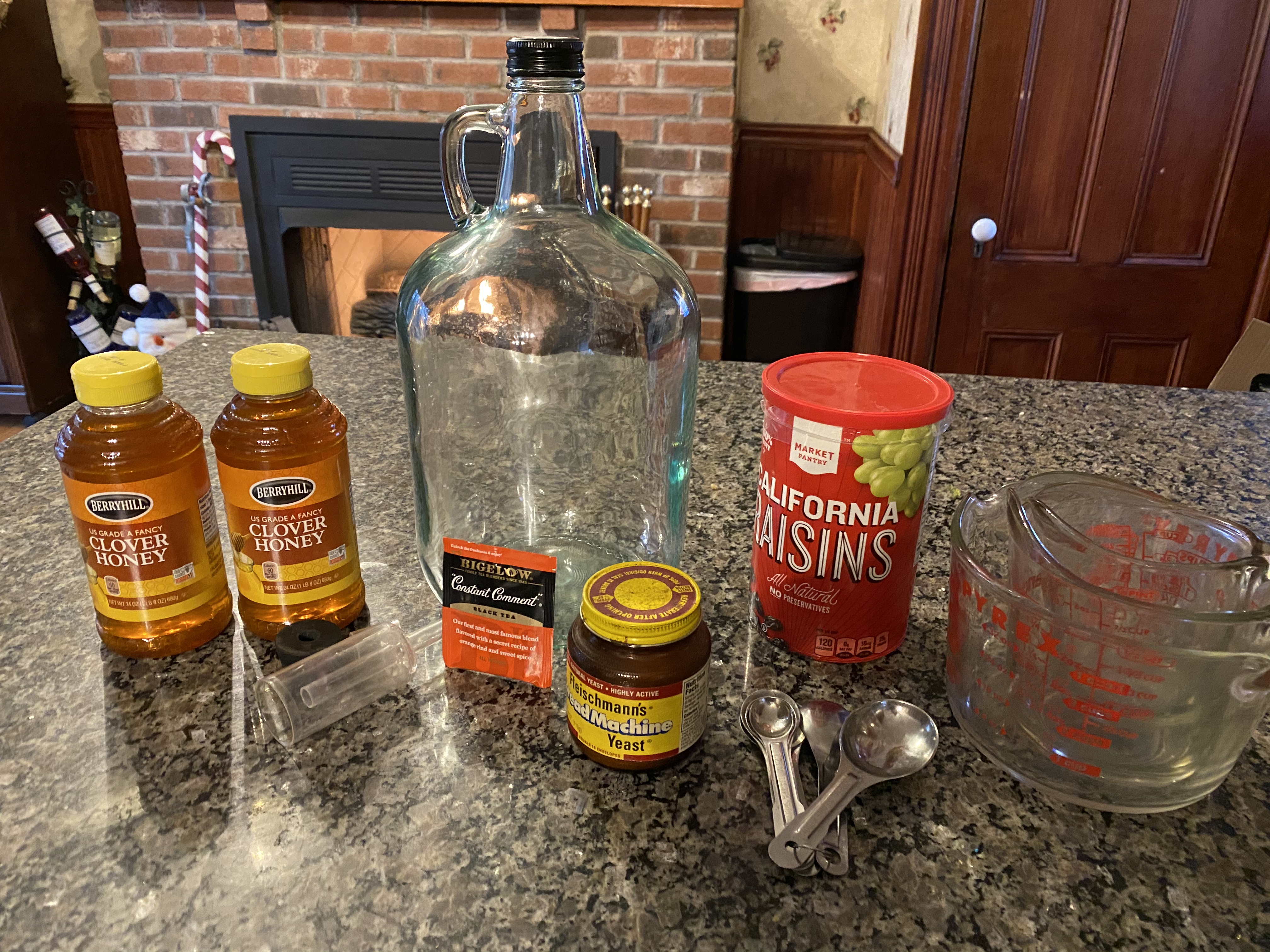
Warming the honey in a hot water bath to make pouring easier:
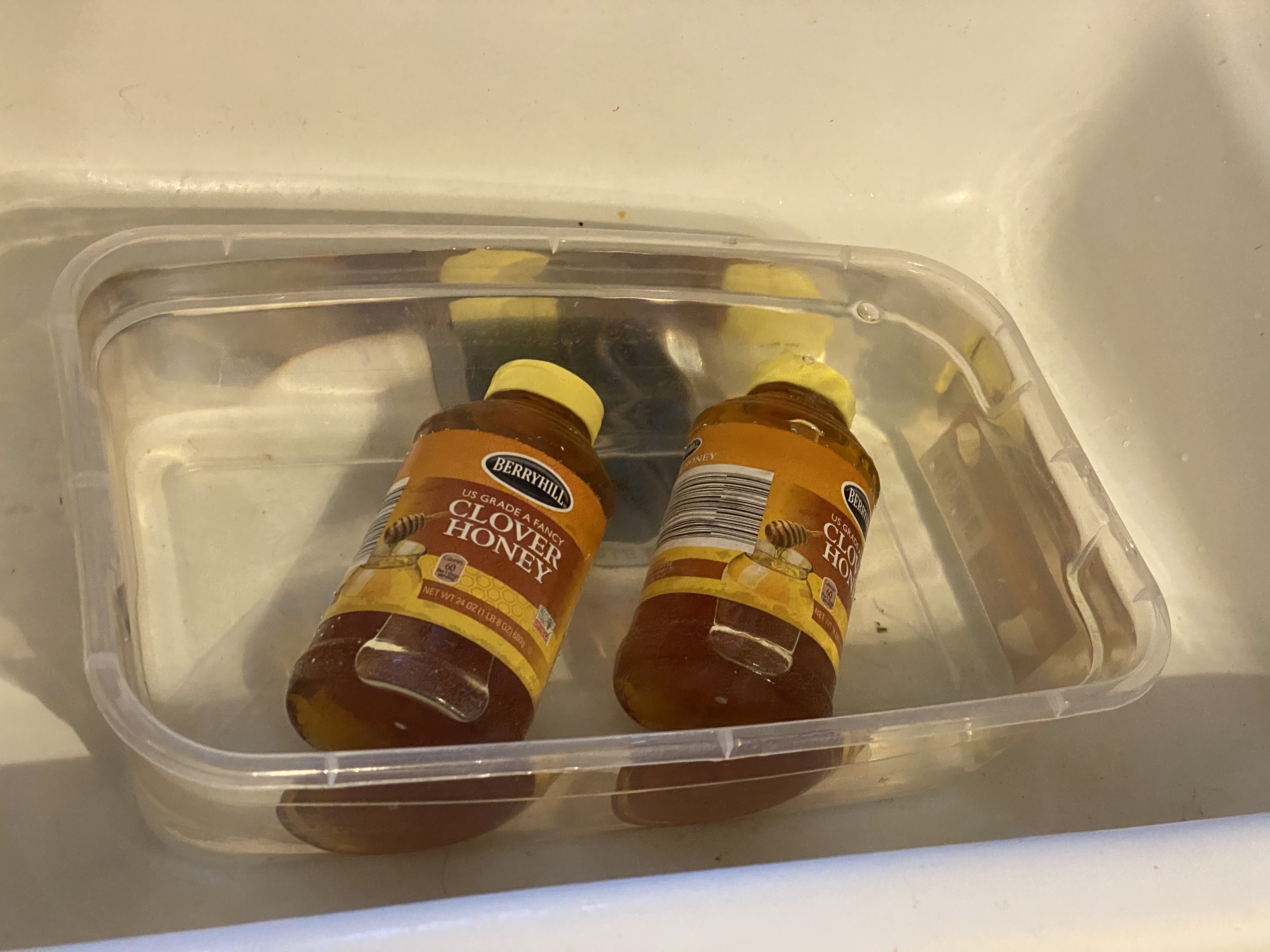
Steeping the tea while doing the rest of the preparation:

Weighing out 2 ounces of raisins:

Chopped the raisins so that the skins do not prevent the goodness inside from diffusing into the mead for the yeast to munch on:

First into the fermenter (a gallon jug from a bottle of inexpensive but tasty cabernet sauvignon) is the honey:

3 pounds (2 bottles) of honey looks to be about 2 cups:

Pouring in the hot tea next rinses the remaining honey through the funnel:

Less dense tea floating on top of the honey as they are not yet dissolved in each other:

The chopped raisins sink through the tea, but float on the honey:

Added 2 cups of cool water - which dissolves immediately into the tea - to get the jug about half full and reduce the temperature so that the yeast will not die when added:

Adding the yeast through a second, dry funnel:
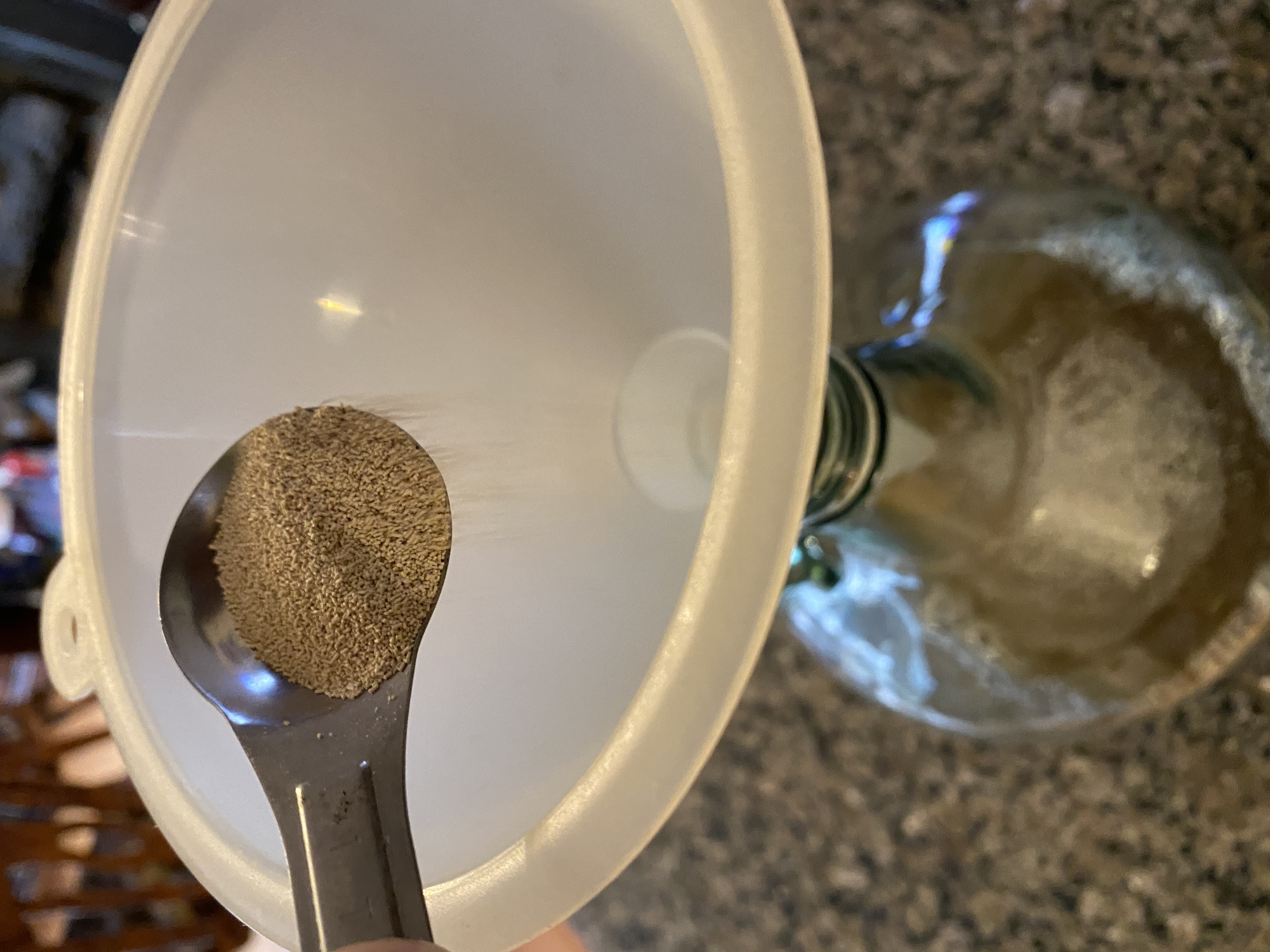
After capping the bottle and shaking thoroughly for about 3 minutes to completely dissolve the honey, oxygenate the water (for the yeast's initial growth phase) and distribute the yeast granules throughout the solution so that they can hydrate efficiently:

Added 7 cups of lukewarm water to raise the level of the "must" to about the "shoulder" of the gallon bottle. Installed the airlock which will allow the CO2 to escape and prevent oxygen and insects from entering. Once the yeast are active they will produce enough CO2 to drive off all of the oxygen in the bottle and thereby prevent any bacterial growth.
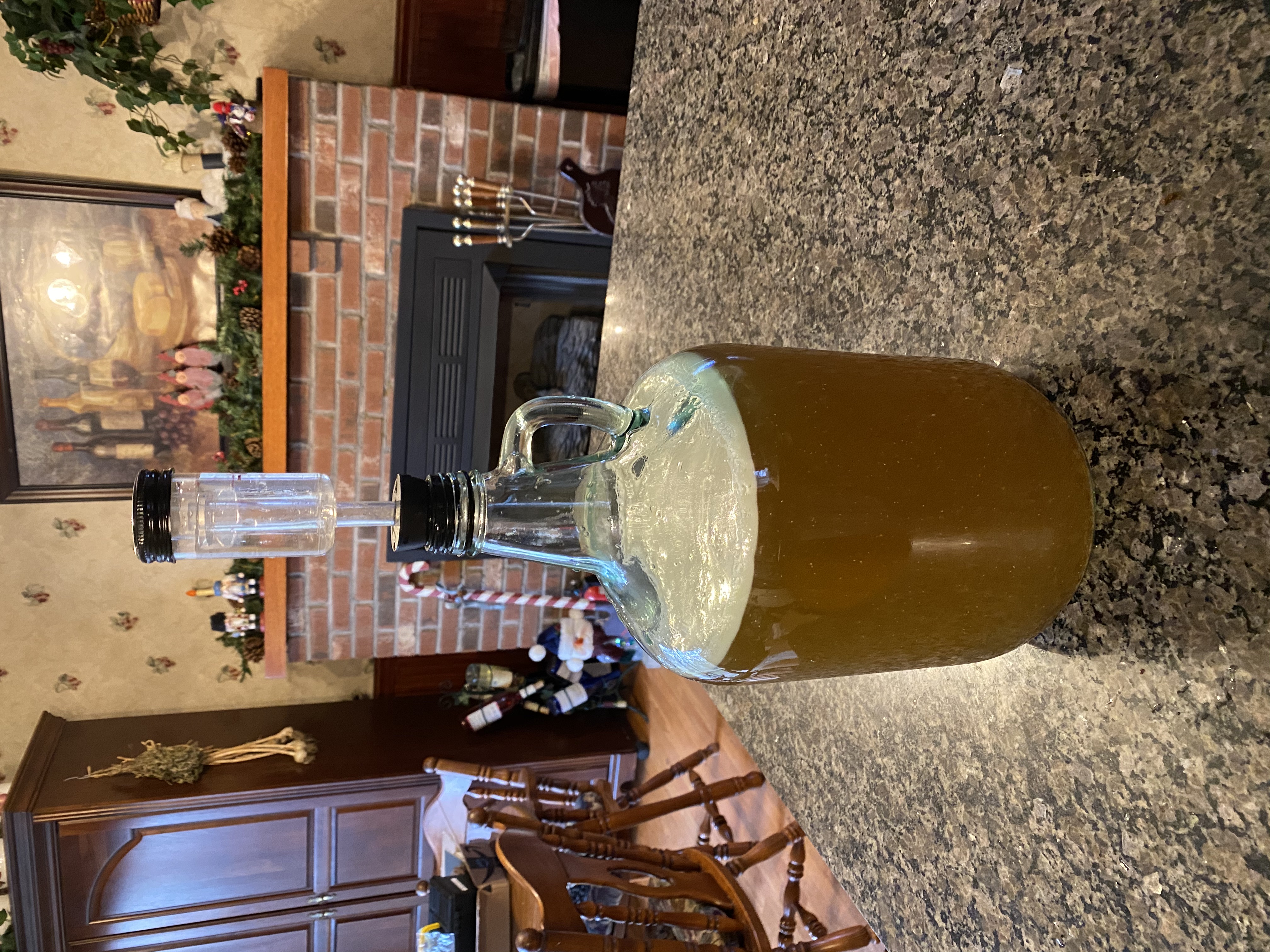
Stashed the fermenter in an unused shower off my studio where it can stay room temperature and spend most of its time in the dark. Should the yeast get overzealous and overflow the fermenter, cleanup will be easy.

8 hours after starting (7 hours after pitching the yeast):

Day 2: Put the fermenter up on a stool because I got tired of kneeling before Odin. 😂 The stool will make it easier to rack it (in a few weeks) when it clears without disturbing the dormant yeast that settle to the bottom. (It has to be elevated for a siphon to work.)

Hmmmm... 🤔

Fermentation - Day 3:
One Week (With fancy backlighting)
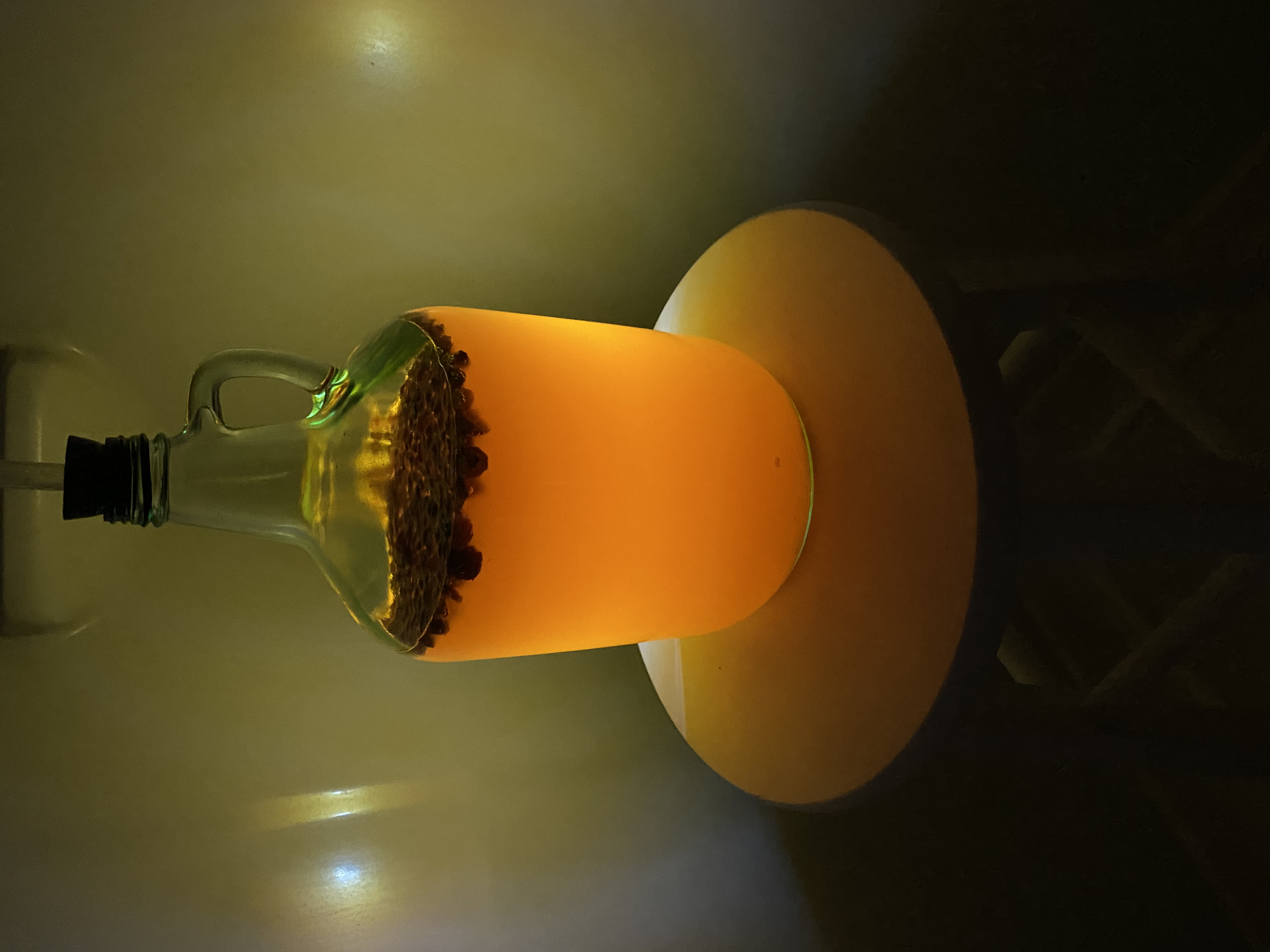
Two weeks after starting and fermentation is slowing. Yeast are starting to settle to the bottom.

| approx. 2 cups honey | |
| 2 cups tea | |
| + | 9 cups water |
| 13 cups total (approx. 3 liters) |